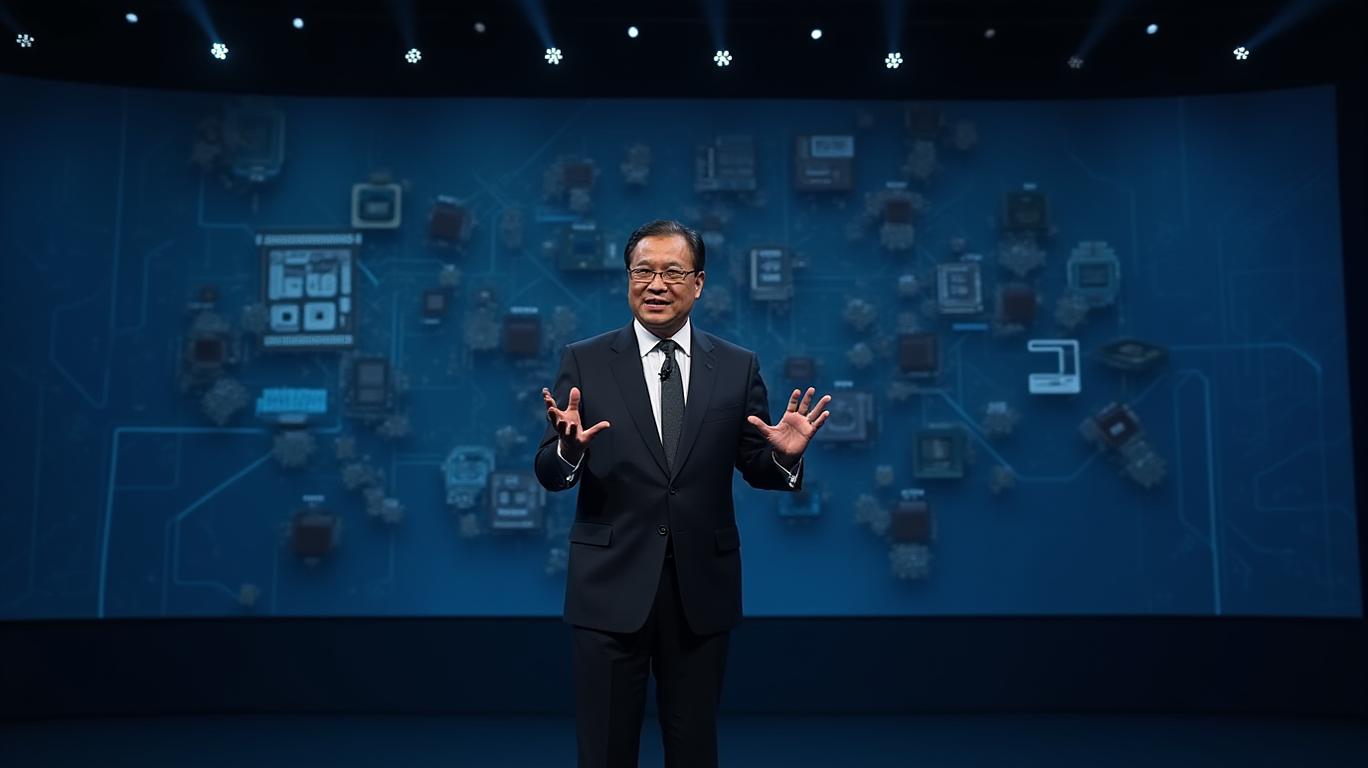Intel's Turnaround Under Tan: Can the Foundry Strategy Overcome Execution Risks?
The semiconductor industry is at a crossroads, and
(NASDAQ:INTC) finds itself in the eye of the storm. Deutsche Bank’s recent Hold rating on the company underscores a stark reality: while CEO Lip-Bu Tan’s leadership offers hope for a turnaround, execution risks and market skepticism remain formidable obstacles. With a $23 price target and a valuation hinging on the success of its Foundry business, Intel’s future is as much about overcoming near-term hurdles as it is about realizing long-term potential.The Tan Factor: Leadership as a Double-Edged Sword

Tan’s appointment in late 2024 marked a pivotal shift for Intel. A seasoned semiconductor executive with a track record at Cadence Design Systems, Tan brings technical expertise and a customer-centric mindset. Deutsche Bank praises his vision for a “profitable, sustainable growth” model, particularly his focus on the Foundry business—a segment the bank sees as critical to unlocking value.
Yet, the devil lies in the details. Tan’s strategy remains vague, with no concrete product roadmaps or cost-cutting timelines. Deutsche Bank warns that execution will be “challenging and time-consuming,” as Intel must overhaul its manufacturing processes and reclaim its edge in advanced chips. The question is: Can Tan’s experience translate into rapid, decisive action, or will Intel’s bureaucratic inertia stall progress?
Financial Health: A Fragile Foundation
Intel’s current financials are a mixed bag. With $53.04 billion in annual revenue, the company remains a titan in scale. But its profitability is in freefall: a negative bottom line over the past year due to soaring manufacturing costs and a lack of leading-edge products.
Cost-cutting measures, including layoffs and a $5 billion reduction in capital expenditures, aim to stabilize margins. However, Deutsche Bank stresses that meaningful improvements in earnings per share (EPS) and free cash flow (FCF) depend entirely on the Foundry unit’s success. The bank estimates a potential $2 EPS by 2027 if Intel can secure external foundry contracts and reduce production costs—a big “if.”
The Foundry Pivot: Intel’s Last Hope?
Intel’s Foundry Services reported $4.7 billion in sales in Q1 2025, a 7% annual increase. But here’s the catch: 80% of those sales were for internal use. Attracting external customers—like Apple, Samsung, or Qualcomm—is non-negotiable.
Deutsche Bank sees Foundry as Intel’s “upside catalyst.” A breakthrough here could redefine its valuation. However, competition is fierce. TSMC and Samsung dominate the foundry market, and ARM’s growing share (up 281 basis points to 13.6%) signals a shift toward open-architecture chips. Intel’s x86 dominance is eroding fast, and without a compelling product lineup, its Foundry business risks becoming a sideshow.
Risks: A Perfect Storm of Challenges
- Execution Delays: Manufacturing cost reductions and process improvements are years behind schedule. Any further delays could prolong losses.
- Market Share Collapse: ARM’s gains and Intel’s loss of 182 basis points in microprocessor share highlight vulnerability in its core business.
- Foundry Dependence: Intel’s survival now hinges on external foundry wins. CFO David Zinsner admits progress is “slow”—a red flag.
- Shareholder Costs: New share reserves for executive compensation add dilution risks unless profitability rebounds.
The Bull Case: A Foundry Renaissance
Tan’s vision could yet pay off. A conservative communication style and focus on “strategic prioritization” aim to rebuild trust. If Intel can:
- Secure major foundry contracts (e.g., with automakers or AI firms),
- Cut manufacturing costs to below $100 per wafer (currently $120), and
- Release advanced 20A/20B chips by 2025,
then the $2 EPS target becomes achievable. Deutsche Bank’s $23 price target reflects this scenario, but bulls argue the stock could surge if upside risks materialize.
Analyst Consensus: Patience, but Not Hopelessness
The average analyst target of $21.31 suggests muted optimism, but GuruFocus’s $23.65 GF Value hints at hidden upside. Peers like Stifel ($21 Hold) and Cantor Fitzgerald ($26 Neutral) echo Deutsche Bank’s cautious stance.
Conclusion: A High-Stakes Gamble
Intel’s story is a classic “high-risk, high-reward” scenario. The Foundry strategy offers a path to revival, but the execution hurdles are monumental. For investors, the calculus is clear:
- Buy: If you believe Tan can deliver on his Foundry vision and reverse manufacturing inefficiencies.
- Hold: If you’re waiting for clearer signs—like a major foundry deal or EPS growth.
- Sell: If you think Intel’s legacy challenges are insurmountable, or if you prefer safer bets in the semiconductor space (e.g., NVIDIA or AMD).
The stock’s current dip—down 0.5% premarket—reflects investor ambivalence. But with a market cap of $92.78 billion, Intel’s valuation is still a fraction of its potential if the Foundry pivot succeeds.
Final Take: Intel is a “watch and wait” story. The next 12–18 months will test Tan’s leadership and the Foundry’s promise. For aggressive investors willing to bet on a turnaround, now is the time to position—but keep a close eye on execution milestones.

Comments
No comments yet